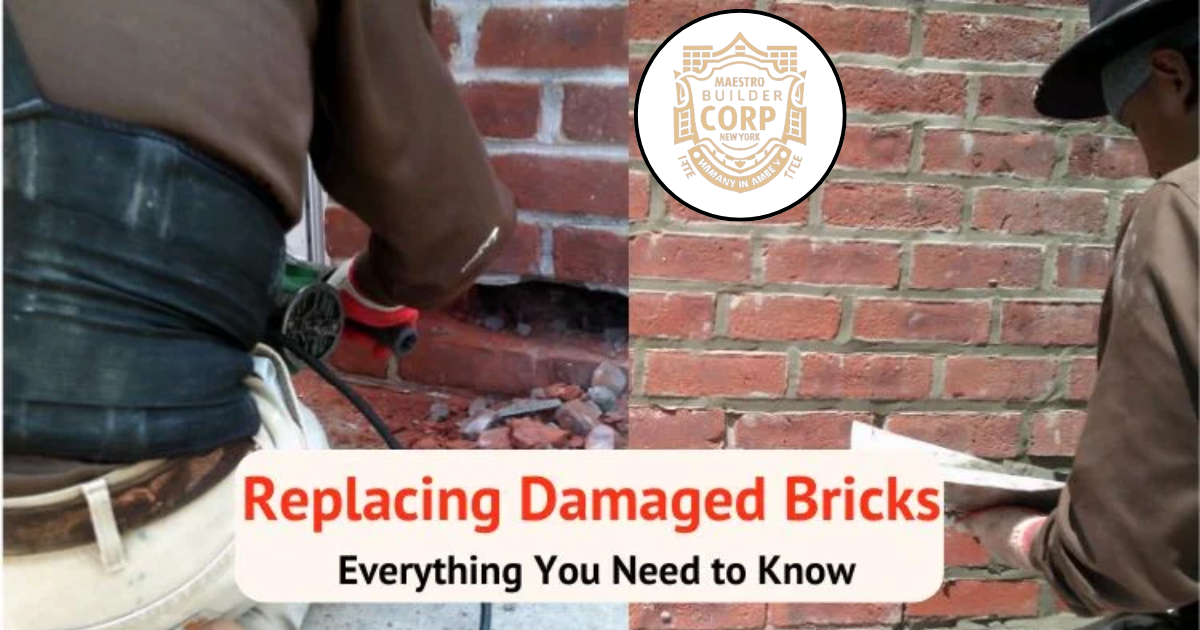As a property owner, the most common question that clouds your mind is whether you should repair or replace bricks. It is often a prevailing dilemma, making you confused and unable to make a decision. Well, brick structures are undoubtedly highly durable as they can defend against harsh weather conditions, offering a safe dwelling environment. Unfortunately, over time, they succumb to decay, requiring repair or replacement.
Sometimes, repair can fix minor problems, while other times, you need extensive brick replacement. Brick repair is undoubtedly cost-effective, but it doesn’t always propose a permanent solution. Often, the damage is too severe for a repair job. Especially, if you are residing in any of these cities like the Bronx, Queens, Manhattan, Long Island, Brooklyn, and Richmond Hill, brick wall replacement may be often the ideal fix. Why? Because of the extreme weather conditions, high precipitation, and temperature fluctuations which adversely affect the structural integrity of bricks.
In this blog, we will discuss the common problems that demand replacing the bricks and how it is done. Without further delay, let’s get started.
When Do You Need Brick Replacement?
The lifespan of brick structures may exceed up to 100 years, depending on how well you maintain them. However, typically, brick walls need tuckpointing every 20 to 30 years because the mortar joints are considerably susceptible to early damage.
We have listed the factors when a brick needs a replacement:
- Bowing or Leaning- The bowing or leaning of a brick wall happens when there is critical structural damage. Generally, excessive moisture exposure, soil settlement, or ground movement are responsible for this phenomenon. Such walls need a replacement to restore integrity and stability.
- Broken or Decayed Bricks- Bricks develop cracks that expand over time. Often, the cracks expand, and the bricks break or become feeble. It also occurs due to excessive weathering and erosion of the bricks. Replacing the damaged bricks is the most viable solution. The cost to replace damaged bricks depends on the extent of severity.
- Blisters or Uneven Surface- Blisters are also a common problem which deteriorates a brick’s strength and stability. Moisture and temperature fluctuations are the primary causes of blisters.
Damage Brick Replacement
Unlike brick repair, replacement is an invasive procedure demanding highly skilled professionals to ensure optimal outcomes. So, how is it done?
- Identify Damage- To begin, you must recognize the extent of the damaged area and find new bricks identical to the old ones.
- Prepare New Bricks- It is essential to submerge the new bricks in water to ensure better adhesion. Bricks are porous. So, they absorb moisture easily. Wet bricks allow the mortar to cure slowly, aiding enhanced strength of the structure. To replace the damaged bricks successfully, this is a prerequisite step.
- Remove Damaged Bricks- Carefully remove the old bricks by drilling holes in the mortar. It helps in the easy removal of the mortar for pulling out the damaged bricks.
- Prepare Mortar- Mix sand, cement, and water to prepare fresh mortar. Always ensure that the ratio of the materials is in exact proportion.
- Apply Mortar- Put a layer of mortar in the gaps. The mortar layer must be one inch thick.
- Place Brick- Insert the bricks and press them slightly. Extra mortar will ooze out. Remove excess mortar and smoothen the surface with a trowel.
- Cure Brickwork- Allow the brickwork to cure. Sprinkle water to keep the surface moistened so that the mortar does not dry out rapidly.
Brick replacement cost is always higher than repair, but it is a long-lasting solution. Replacing damaged bricks offers enhanced efficiency and increased aesthetics.

